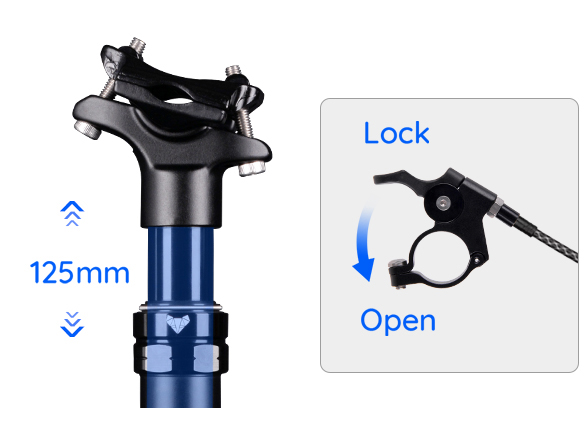
Cycling is not only a means of transportation, but it is also a great way to enjoy the outdoors, exercise, and stay healthy. However, if you want to get the most out of your cycling experience, you need to consider investing in a good lightest suspension seatpost. A suspension seatpost reduces the impact of the bumps and rough terrain on your body, which in turn reduces the risk of injury and makes your ride more comfortable. If you are looking for a light suspension seatpost that offers optimal performance, look no further than the Trifox suspension seatpost. 1. The Benefits of a Light Suspension Seatpost A light suspension seatpost has many benefits, including reduced weight, increased maneuverability, and improved comfort. When you reduce the weight of your bike, you can cycle further and faster, especially on uphill sections. A suspension seatpost also improves the handling of your bike, especially on rough terrain, making it easier to avoid obstacles and negotiate turns. Moreover, a suspension seatpost absorbs shocks and vibrations, which helps to reduce fatigue and discomfort, thereby allowing you to ride for longer periods. 2. The Features of the Trifox Suspension Seatpost The Trifox suspension seatpost is a top-of-the-line product that offers several advanced features. It is made from high-quality aluminum alloy, which makes it durable and lightweight. The seatpost has an air suspension system that allows you to adjust the level of damping to suit your riding style and terrain. The external cable routing and remote center are designed for convenience, ease of use, and compatibility with most bike frames. The Trifox seatpost has a travel range of 125mm, which falls into the sweet spot of travel for most mountain bikers. 3. The Importance of Weight One of the most crucial factors to consider when selecting a suspension seatpost is weight. A heavy seatpost can slow you down, make it difficult to climb hills, and reduce maneuverability. Therefore, it is essential to choose a light suspension seatpost that provides optimal performance while keeping weight to a minimum. The Trifox suspension seatpost weighs less than 500g, which makes it one of the lightest seatposts on the market today. 4. How to Choose the Right Size To ensure that you get the most out of your suspension seatpost, it is crucial to select the right size. The Trifox suspension seatpost comes in two sizes, 31.6mm and 30.9mm, which fit most bike frames. However, it is essential to ensure that the diameter of your bike frame matches the seatpost diameter for a perfect fit. You should also consider the length of the seatpost and the amount of travel you need for optimal performance. 5. Conclusion A light suspension seatpost is an essential component of any cyclist's arsenal, whether you're a professional, amateur, or recreational rider. The Trifox suspension seatpost offers optimal performance, durability, and comfort while keeping weight to a minimum. In addition, its advanced features, such as air suspension, external cable routing, and remote center, make it a versatile and user-friendly product. So, if you want to enjoy a comfortable and safe cycling experience, invest in a Trifox suspension seatpost today! Selecting a light suspension seatpost is crucial for enhancing your cycling performance and enjoying a comfortable ride. The Trifox suspension seatpost is a high-quality product that offers several advanced features, including air suspension, external cable routing, and remote center. It is made from high-quality aluminum alloy, which is durable and lightweight. The Trifox seatpost weighs less than 500g, making it one of the lightest suspension seatposts on the market today. So, whether you're a professional, amateur, or recreational rider, invest in a Trifox suspension seatpost to take your cycling experience to the next level.

Choosing the ideal road bike for your biking activities is far from easy. With a plethora of bike reviews and recommendations available on the internet, finding the perfect road companion has become increasingly challenging. However, paying close attention to specific characteristics such as frame material, weight, drivetrain, and wheel selection can help you decipher bike reviews and choose the best road bike that suits your needs. 1. Frame Material: The frame material is perhaps the most important factor to consider when selecting a road bike. Most bike manufacturers use lightweight material such as carbon fiber, aluminum, titanium, and steel to reduce the overall weight of the bike. Carbon fiber is the most popular material used in making high-end road bikes because of its lightweight, durable, and stiff qualities. Aluminum and titanium are also great options for mid-range bikes as they are strong, light, and affordable. Steel, on the other hand, is an excellent choice for people looking for a comfortable ride as it absorbs shocks better than the other materials. 2. Weight: The weight of the road bike is another essential factor to consider when reading bike reviews. A lightweight bike means better acceleration, handling, and easier uphill climbing, making it a perfect choice for racing and long rides. However, the flip side is that lightweight bikes are costlier than heavier ones. A heavier bike, on the other hand, is a suitable option for beginners and those who prefer more stability on the road. 3. Drivetrain: The drivetrain system of the bike is the component responsible for transferring the power from the pedals to the wheels. The number of gears a bike has, the type of shifters it features, and the range of gears it can achieve are all critical factors to look at when reading bike reviews. Most modern road bikes feature either a 2x or 3x drivetrain system with the 2x being the popular choice. However, each option has its advantages depending on your biking style and daily riding activities. 4. Wheel Selection: Wheel selection is another critical factor to consider when decoding bike reviews. Wheels play a crucial role in determining the handling, speed, and comfort of the bike. Most high-end road bikes feature lightweight and aerodynamic carbon fiber wheels that enhance rolling resistance and speed. However, alloy wheels are a great option for people looking for affordable yet functional wheels. 5. Bike Fit: Proper bike fit is essential to ensure that your riding experience is as comfortable and enjoyable as possible. When reading bike reviews, look for features such as saddle height, bike frame size, saddle angle, and handlebar position to determine whether the bike is an excellent fit for you. Additionally, make sure to test ride the bike personally to ensure that it feels comfortable and stable during riding. Choosing a road bike that meets your biking needs can be challenging, but paying close attention to essential factors such as frame material, weight, drivetrain, wheel selection, and bike fit can help you decipher bike reviews and select the perfect bike for you. Remember to also consider your budget and personal preferences when selecting your bike as they'll play a significant role in your biking experience. With this guide, we hope that you can choose the perfect road companion that'll help you enjoy riding for years to come. Happy biking!
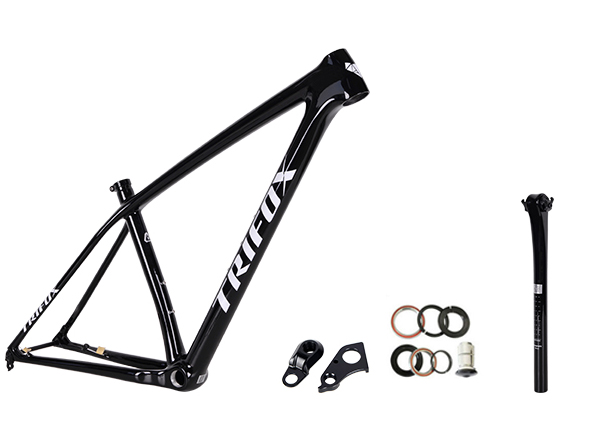
If you're looking to upgrade your off-road biking experience, investing in a light hardtail MTB (Mountain Bike) frame is the perfect place to start. A hardtail frame offers better power transfer and control compared to full suspension frames, which make them ideal for mountainous terrains, technical trails, and cross-country riding. However, with multiple models and brands on the market, it can be daunting to choose the ideal Lightest hardtail MTB frame for your needs. 1. Material The frame's material plays an essential role in determining its weight, stiffness, durability, and comfort. The most common materials used for hardtail MTB frames include Aluminum, Steel, and Carbon Fiber. Steel is the heaviest, but it offers superior durability, smooth riding experience, and affordability. Aluminum is a popular choice due to its lightweight, stiffer ride, and affordability. However, it can be uncomfortable on rough terrain compared to steel. Carbon Fiber is the lightest and stiffest material, which offers unparalleled comfort, shock absorption, and speed. It's the most expensive option but ideal for professional riders or enthusiasts who want the best. 2. Geometry and Fit The frame's geometry affects its handling, speed, and comfort. The ideal hardtail MTB frame should have a balanced geometry that offers stability, cornering, and speed. You should pay attention to the frame's Head Tube Angle, Top Tube length, Chainstay length, Bottom Bracket height, and seat angle. Also, ensure that the frame size fits your height and riding style. A frame that's too big or small can affect your balance, control, and safety on the trail. 3. Suspension The hardtail MTB frame offers front suspension, which is essential for shock absorption and comfort. However, you should choose a suspension fork that complements your riding style, the terrain you ride in, and your weight. The suspension fork should have adjustable damping, compression, and rebound to maximize your performance. It would be best to choose a lightweight fork to reduce the overall weight of the frame. Look for forks made from Carbon Fiber or Magnesium. 4. Wheels and Tires The wheels and tires are crucial components of a hardtail MTB frame, which affect your traction, speed, and comfort. The wheels should be robust and lightweight, with optimized spoke patterns to handle rough terrain and reduce weight. The tires should offer the right balance between traction, speed, and comfort. You should consider the type of terrain you ride in, weather conditions, and your riding style when choosing the tires. 5. Budget Finally, you should consider your budget when choosing the ideal Lightest hardtail MTB frame. The frame's price varies based on the material, brand, features, and performance. You can find reliable yet affordable hardtail frames made from Aluminum or Steel. However, if you're an enthusiast or professional rider, investing in a Carbon Fiber frame can offer superior performance and riding experience. Investing in a lightweight hardtail MTB frame can take your off-road biking to the next level. However, choosing the ideal frame requires careful consideration of various factors, including the material, geometry, suspension, wheels, tires, and budget. We hope this guide has equipped you with the knowledge to make an informed decision when choosing your next frame. Enjoy your next adventure!
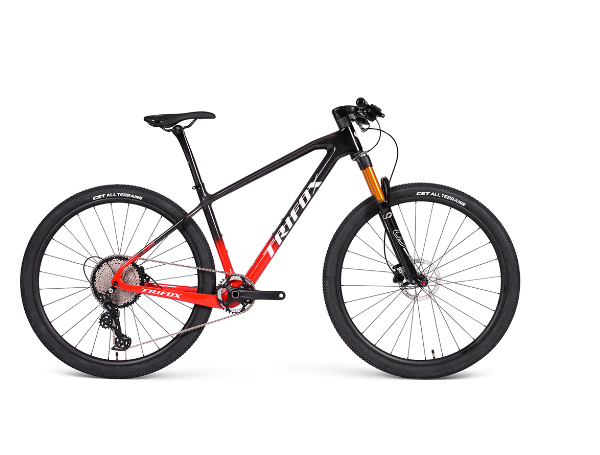
Carbon Drive Mountain Bikes are known for their durability, lightness, and low maintenance requirements. The carbon fiber frame reduces the bike's weight while providing high levels of strength and stiffness to withstand various terrains. Therefore, caring for your carbon drive mountain bike is important for the longevity and performance of the bike. 1. Clean Your Bike After Every Ride: After every ride, it is essential to clean your carbon drive mountain bike. The bike gets covered in dirt, mud, and dust, which can clog the drivetrain and affect its performance. Use a mild bike cleaner to remove the dirt from the bike frame, chain, and gears. Use a soft-bristled brush to scrub the chain and gears, and rinse with water. Avoid using a pressure washer, which can damage the bike's bearings and seals. 2. Check the Carbon Drive System: The carbon drive system is the core of your mountain bike, and it is essential to regularly check the drive system for wear and tear. Inspect the chainring teeth for damage, check for any loose bolts, and ensure the chain tension is correct. Unlike a chain drive system, a carbon drive cannot stretch, and the belt's teeth cannot be replaced. Hence, it is essential to replace the carbon drive system every 10,000 miles or every three years of use. 3. Lubricate the Carbon Drive System: The carbon drive system does not require regular lubrication like a chain drive system. However, it is essential to lubricate the carbon drive system after cleaning the bike or when riding in wet conditions. Lubricate the belt's teeth and the pulleys using a silicone-based lubricant, which does not attract dust or dirt. 4. Store the bike correctly: Where and how you store your carbon drive mountain bike is vital for the bike's longevity and performance. Always store the bike in a dry and cool place, away from sunlight and moisture, which can cause the frame to weaken. Hang the bike using a wall mount or a bike stand, and ensure the bike is not leaning against anything. Place the bike upside down when cleaning or doing maintenance, but never when storing it. 5. Regular Service and Maintenance: Your carbon drive mountain bike requires regular service and maintenance to ensure it performs optimally. Take your bike to a professional mechanic for a service every six months or after over 500 miles of use. The professional will clean the bike, check and adjust the carbon drive system, chain, and gears, and check the bike's brake pads, rims, and tires. Regular service and maintenance save you money in the long run and keep your bike in excellent condition. Caring for your carbon drive mountain bike is easy, and it doesn't require much effort, but it goes a long way. Simple steps, such as cleaning your bike after every ride, inspecting the carbon drive system for wear and tear, and storing it correctly, can keep your bike in top condition. Don't neglect the regular service and maintenance of your bike; it saves you money in the long run and ensures you have a bike that performs optimally. By following the tips above, you can take good care of your carbon drive mountain bike and enjoy your next ride in top condition.
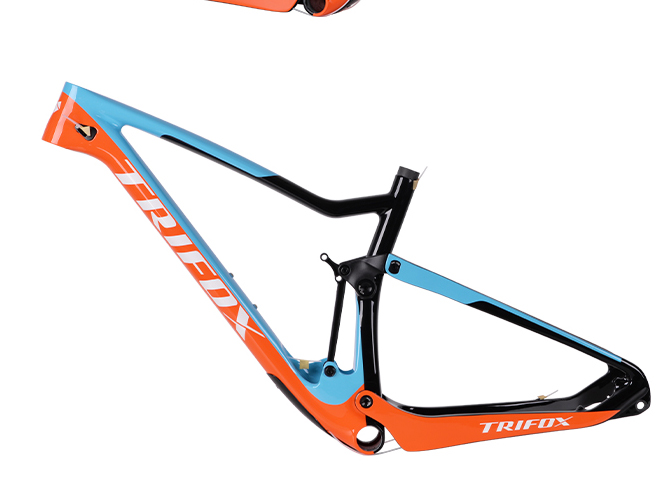
Mountain biking is a thrilling sport but can be tiresome when the ride is bumpy and rough. A good quality suspension system is integral to making your ride smoother and more comfortable, especially for beginners in the sport. Even experienced riders will tell you that the right suspension setup on your frame can make all the difference in ensuring that you have a great time on the trails. 1. Choose a Frame Suspension System That is Suitable for You The first step in setting up your frame suspension is to choose a suitable setup that caters to your needs. Full suspension frames have a linkage system that connects the rear triangle to the shock and can give you greater comfort when riding over rough terrain. On the other hand, hardtail frames have a single suspension fork in the front and are good for riders who follow smoother terrain. The type of frame you select will depend on your riding style and the type of terrain you usually ride in. 2. Set Your Sag The sag determines how much compression your bike experiences when you sit on it. The ideal sag should be set at 25-30% of your total shock stroke. This is important because it provides a good balance between responsiveness and a smooth ride. To set your sag, start by inflating your rear shock to its recommended pressure, hop on your bike with all your gear on, and cycle slowly and steadily for about 10 meters. Ask someone to assist you in measuring the distance between the seal of the shock and the o-ring. Adjust the air pressure in the shock accordingly until you achieve the desired sag. 3. Adjust Your Compression Damping Compression damping controls how much your suspension will compress when your bike hits a bump, and slow down when it rebounds. Turning the dials on your shock and fork damper will adjust the compression damping, providing you with a stiffer or softer ride. Experiment with different settings until you find something that suits your riding style and the terrain you're riding in. It's important to note that a stiffer setting will help with climbing, while a softer setting will provide a smoother ride on downhill sections. 4. Adjust Your Rebound Damping Rebound damping is responsible for controlling your bike's bounce rate after hitting a bump. Setting the rebound damping properly will prevent your bike from bouncing uncontrollably or rebounding too slowly. Too much rebound damping will make it feel harsher, while too little rebound damping will make it feel unstable. Adjust the rebound damping knob to find the appropriate level of resistance. Start by compressing your suspension fully, then release it and watch it rebound. A slow-motion rebound is a sign that you need to increase your rebound damping, while a fast rebound indicates that it's too high. 5. Regular Maintenance Checks Now that you've set up your frame suspension, it's time to enjoy your smooth ride. However, you should remember that maintenance is key in keeping your suspension in good condition. Clean and lubricate your suspension periodically, check your air pressure, and make sure there isn't any oil leaking from the shocks. These maintenance checks will prevent early wear and tear on your suspension system, and give you a longer lifespan. A frame suspension can make all the difference in ensuring a smooth and comfortable ride when mountain biking. Setting up and adjusting your frame suspension is relatively easy, and experimenting with different settings will help you find the perfect fit for your riding style and the terrain you're riding in. Don't forget to keep up with regular maintenance checks to ensure that your suspension lasts you a long time. By doing so, you'll enjoy a more comfortable and confident riding experience that'll make you want to hit the trails time and time again.
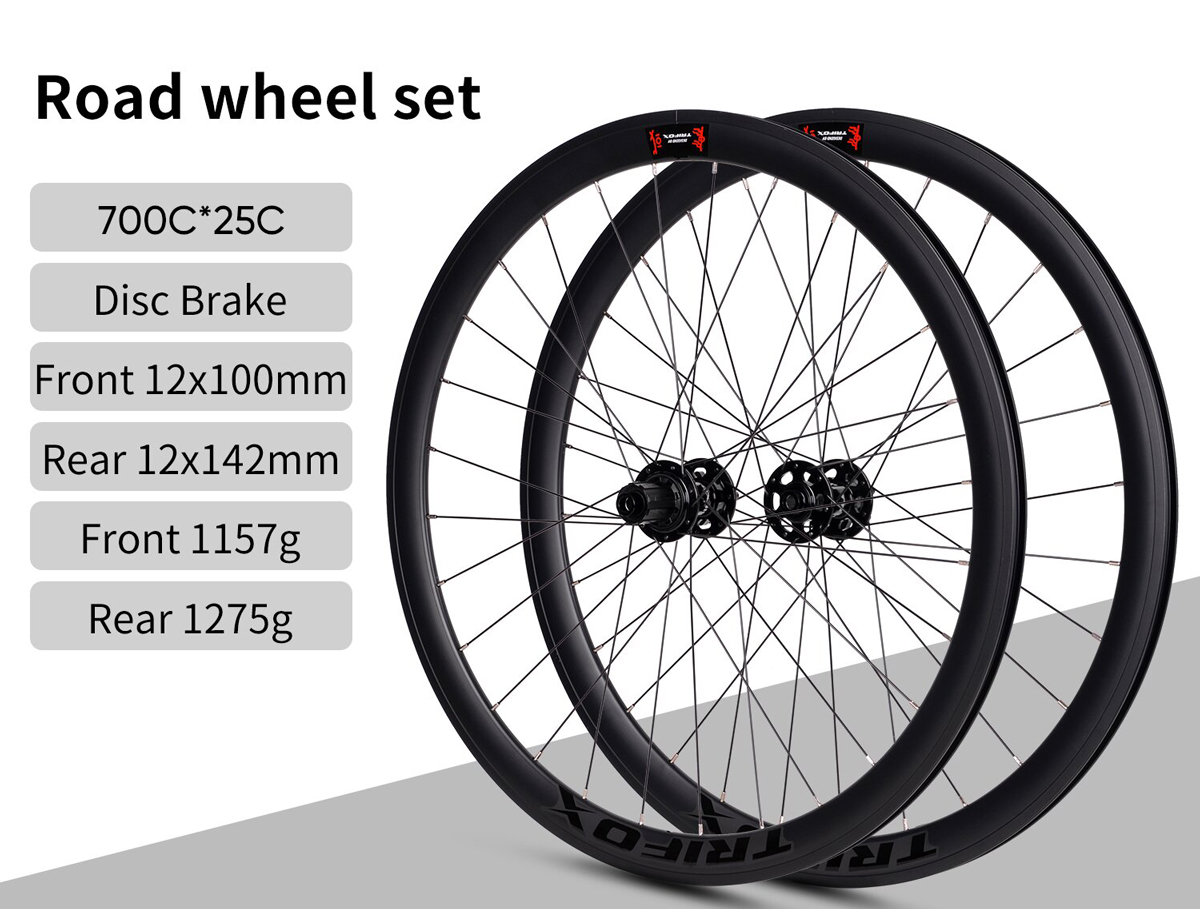
Rim brake road wheels are a critical component of any road bike when it comes to performance. They affect the handling, speed, and overall reliability of your bike. Whether you are a seasoned pro or just getting started, choosing the right set of wheels and maintaining them properly can make all the difference. In this post, we will guide you through the process of selecting the right rim brake road wheels for your bike and help you maintain them to ensure optimal performance. Section 1: Materials and Construction When choosing a rim brake road wheel, the first factor to consider is the material and construction. Carbon fiber wheels are popular due to their light weight and stiffness, but they can come with a hefty price tag. Aluminum wheels are more affordable and offer good performance, but may not be as light as carbon fiber. When it comes to construction, look for wheels with a higher spoke count as they tend to be more durable and better at distributing weight. Section 2: Rim Width and Depth Another crucial aspect to look at when choosing your rim brake road wheels is the width and depth of the wheel. Wider rims tend to offer better aerodynamics, better handling, and are better for larger tires. On the other hand, shallow rims are lighter and better for climbing. Depending on your riding style and preferences, you may want to opt for a deeper or shallower rim. Section 3: Brake Pads and Wear One of the most important aspects of maintaining your rim brake road wheels is checking your brake pads and wear regularly. Brake pads can wear out over time and may require replacement, so checking them periodically can save you from potential accidents. Also, ensure that the brake pads are compatible with your chosen wheels to avoid poor stopping power. Section 4: Regular Cleaning and Lubrication Maintaining your rim brake road wheels also involves regular cleaning and lubrication. Dirt and grime buildup can affect the performance of your wheels, so make sure to clean them regularly. Use a mild soap and water to clean the wheels, and then lubricate your bearings and spoke nipples to keep them running smoothly. Section 5: Proper Storage Finally, proper storage of your rims can help ensure their longevity. Store them in a cool and dry area, away from any moisture or dust. Additionally, if you are not using them for an extended period, consider removing the tires and tubes and storing them separately to avoid any damage or deformation. Choosing and maintaining your rim brake road wheels can significantly impact your bike’s overall performance and longevity. It's crucial to consider the material, construction, rim width and depth, brake pads and wear, regular cleaning and lubrication, and proper storage. By following these guidelines, you can ensure that your bike wheels are always optimally performing, giving you a smoother ride with less chance of accidents. So, ensure that you choose the right rims for your bike and stay mindful of their upkeep to keep riding at your best.
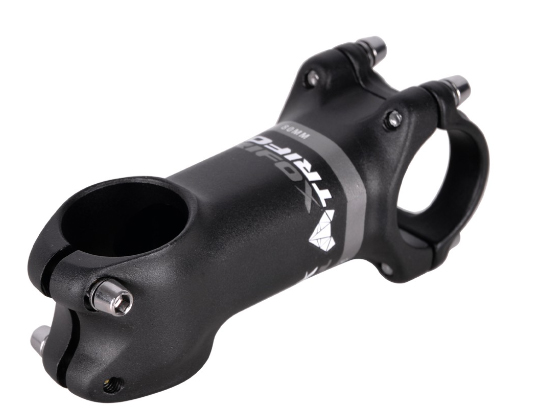
Biking enthusiasts know the importance of having the right equipment for a comfortable and efficient ride. One of the many bike components that can make a significant impact on your cycling experience is the handlebar stem. In recent years, the 31.8 handlebar stem has become a popular choice among cyclists, but what makes it stand out from the rest? 1. Improved Rigidity: The 31.8 handlebar stem is known for its increased rigidity as it has a larger diameter compared to other standard handlebar stems. The increased rigidity not only provides more stability when cycling but also enhances the precision of your bike’s handling, especially when negotiating corners or steep hills. 2. Lighter Weight: With its larger diameter, the 31.8 handlebar stem can also be made lighter, which makes it a popular choice for road racers and mountain bikers. Weight reduction on a bike component can make a noticeable difference to the overall weight of the bike and improve speed and riding efficiency. 3. More Comfortable Riding Position: The 31.8 handlebar stem has a shorter projection length compared to other handlebar stems. It means that the stem positions the handlebars closer to the rider, allowing for a more comfortable riding position. Additionally, the shorter projection length also reduces the amount of force and strain on the wrists and elbows. 4. Availability: As a more recent addition to bicycle components, availability is not an issue for the 31.8 handlebar stem. Many bicycle manufacturers and bike stores offer a wide range of options when it comes to the 31.8 handlebar stem, from different materials, colors, and sizes, making it an accessible choice for many riders. 5. Affordable Options: One of the myths surrounding the 31.8 handlebar stem is that it can be pricey, but that is not always the case. Many high-quality 31.8 handlebar stems are affordable and offer the same benefits as more expensive options, making it a budget-friendly option for those on a tight budget. Conclusion: Choosing the right handlebar stem is crucial for having a comfortable, efficient, and safe ride as a cyclist. The 31.8 handlebar stem provides increased rigidity, lighter weight, a more comfortable riding position, and is readily available and affordable for many riders. Whether you are a professional road racer or an occasional weekend cyclist, the 31.8 handlebar stem could be the perfect choice for improving your overall cycling experience. Check out Trifox Bike to find a lightweight alloy 31.8 handlebar stem that fits your biking needs and budget.

As a dedicated cyclist, you know that a comfortable grip is essential to a smooth ride. Having a good quality handlebar tape can make all the difference, whether you're a competitive racer or a weekend warrior. If you're looking for a top-notch road bike bar tape that ticks all the boxes - look no further. In 2024, Trifox Bike introduced their iconic Trifox Bike Handlebar Tape BHT100, which is designed to enhance the grip, shock absorption, and comfort level for avid cyclists. Here's why you should give it a try! 1. Superior Quality The Trifox Bike Handlebar Tape BHT100 is made from high-quality materials that are both durable and functional. Made from a combination of Polyurethane and EVA, the tape provides excellent shock absorption and minimizes vibrations, keeping your hands comfortable and stable in the saddle. It's also fully washable and maintenance-free, meaning you can enjoy worry-free riding and a long-lasting tape. 2. Easy to Install The Trifox Bike Handlebar Tape BHT100 comes with all the accessories you need to install it on your bike handlebars, including two roll tapes, two end plugs, and two adhesive strips. Whether you're a DIY enthusiast or a complete beginner, the installation process is easy and straightforward. The tape is also flexible, allowing you to wrap it around the handlebars with ease, and it provides a secure grip that won't slip or move during intense rides. 3. Comfortable Grip The Trifox Bike Handlebar Tape BHT100 provides an excellent grip, which is crucial for serious cyclists who need extra stability and control when riding. The tape features a microfiber texture that feels soft on your hands and provides extra traction. It's also breathable, reducing sweat buildup, and helps ensure a dry and comfortable grip. The tape's texture is also customizable - available in a wide range of colors and designs to match your specific taste and bike. 4. Affordable Pricing One of the best things about the Trifox Bike Handlebar Tape BHT100 is its affordable pricing. Comparable products from other brands can cost double or triple the price of this product without providing the same level of quality and functionality. Whether you're a seasoned cyclist or new to the sport, investing in good quality handlebar tape is essential for a comfortable ride. The BHT100 has an unbeatable value for the price, making it an excellent choice for riders looking for a cost-effective solution. 5. Positive Reviews Don't just take our word for it - the Trifox Bike Handlebar Tape BHT100 has received numerous positive reviews from happy customers worldwide. Cyclists love the tape's excellent grip, durability, and comfort level, making it a reliable and highly-rated choice among enthusiasts. The tape is compatible with most road bikes and is suitable for beginners and advanced riders alike. When it comes to choosing the best road bike bar tape, quality, functionality, and affordability are key. The Trifox Bike Handlebar Tape BHT100 offers all of these features and more, making it a top pick for cyclists worldwide. With easy installation, customizable design, and unbeatable comfort, the BHT100 is a product that stands out from the competition. Whether you're a competitive cyclist or enjoy leisurely rides, the Trifox Bike Handlebar Tape BHT100 is a product that is sure to exceed your expectations and provide you with the ultimate cycling experience.

More and more cyclists are beginning to switch to disc brakes. With the advantages of improved stopping power, and superior modulation especially in wet conditions, it is not surprising to see why. But, is the 700c wheelset disc brake the right fit for your cycling needs? In this blog post, we will dive deep into everything you need to know about the 700c wheelset disc brake, including its features, advantages, and potential drawbacks. So, read on to find out more. What is a 700c Wheelset Disc Brake? Before we go to its features, let us first understand what is a 700c wheelset disc brake? A 700c wheelset is the most common size for road bikes with a diameter of 622mm. On the other hand, a disc brake involves the use of a rotor and caliper instead of a traditional brake pad that rubs against the wheel rim. When the brake is applied, the brake pads are squeezed against the rotor and slows down the bike. Features of a 700c Wheelset Disc Brake The 700c wheelset disc brake has some distinct features. Firstly, it brings superior stopping power and better modulation, especially in wet conditions. This is because the disc brake does not rely on the wheel's rim surface to provide stopping power, which is usually slick when wet. Furthermore, a 700c wheelset disc brake performs better on steep descents as it does not overheat like rim brakes can. Secondly, it allows for wider tire clearance. Disc brakes do not require a brake track on the rim, which allows the use of wider tires and rims. This feature is especially desirable for cyclists who want to ride on rougher roads or trails, providing more grip and a smoother ride. Lastly, the 700c wheelset disc brake is great for durability. Rim brakes wear out the wheel, reducing its lifespan by creating grooves in the side of the rim. The disc brake does not come in contact with the rim, making it last longer. Advantages of a 700c Wheelset Disc Brake The advantages of the 700c wheelset disc brake are evident. For one, it offers superior stopping power regardless of weather conditions. Compared to rim brakes, the disc brake's caliper can be placed closer to the hub, ensuring maximum leverage and more stopping power. Secondly, the use of wider tires, thanks to the disc brake, results in a smoother ride. Finally, the 700c wheelset disc brake is more durable than rim brakes, creating more value for your money in the long run. Potential Drawbacks of a 700c Wheelset Disc Brake However, there are also a few disadvantages to a 700c wheelset disc brake. One of these is the potential for the disc brake to rub against the rotor. While it may seem minor, it can cause drag, reducing speed, and making riding more challenging. Secondly, disc brakes require more maintenance than rim brakes, which can be inconvenient for some riders. Finally, the 700c wheelset disc brake can be slightly more expensive to install and replace than rim brakes. In conclusion, the 700c wheelset disc brake can be the right fit for your cycling needs. With its superior stopping power, wider tire clearance, and durability, the advantages of the disc brake generally outweigh the disadvantages. It is essential to be aware of the potential drawbacks, but as disc brakes become more popular, these issues will likely become less common. Overall, whether you are a professional road biker or an amateur rider, a 700c wheelset disc brake can provide significant performance benefits to your cycling experience, and it is undoubtedly worth considering.

















